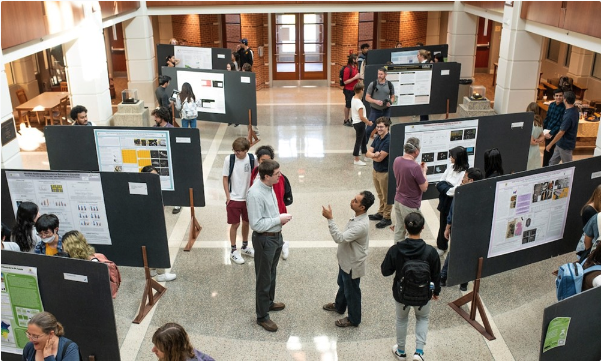Date of Award
Spring 2021
Document Type
Thesis
First Advisor
Harry Brown
Second Advisor
Elizabeth Eslami
Third Advisor
Paul Johnson
Abstract
In the entirety of my high school career, few courses spoke more to my soul than A.P. U.S. history, affectionately referred to as “APUSH” by teachers and students alike. For someone who has always been fascinated by history and the ways in which our country came to be, the opportunity to finally sit down in a formal classroom setting and engage with a proper curriculum regarding the circumstances of America’s origins, turmoil, and eventual rise to the global superpower status it holds today was incredible. It felt like something I had been waiting for since I had first learned to mentally string words into sentences and dove nose-first into mountains of picture books about the then 43 Presidents of the United States.
But, as I sat back in my folded chair after capping off my final essay on that long- anticipated A.P. exam, there were still some things which bothered me, some parts of our history which I felt had far too little time devoted to them, given how impactful their consequences must have been. Sure, I had enjoyed nearly every page of our textbook, from Columbus’ landing in the New World to the anticipation of an uncertain 21st century in pages that would only continue to be filled in later editions, but glaring oversights continued to nag at me. We had spent hardly a day in class discussing the Mexican American war, which had seen Mexico cede a whopping 40% of its land to its northern neighbor through the signing of a single treaty. For as important as this had seemed to me, it appeared as though we could not dwell on this war for too long, as the American Civil War loomed ahead of us, erupting just over a decade later. From this point on, it was as though a separate path had diverged entirely. Most of the latter half of the 19th century United States was characterized by what was known as the Reconstruction era, in which a country still fractured and reeling from its own near implosion, sought to further liberate or subjugate a population now emancipated from slave status. For our APUSH class, the Reconstructionist era set the stage for much of the political strife the United States would face in the 20th century and has affected us in ways we can observe to this day. Despite all of this, the scale and impact of the overshadowed Mexican American War feels criminally overlooked. The stories of some 80,000 Mexicans who instantly became American citizens, and the stories of the thousands upon thousands who came after, are shoved to the background of American history curriculums as the charge continues into a deadly war and a tumultuous age of reconstruction. What consequences did this war have for people? I thought to myself, how did something on as grand a scale as the Mexican American War affect how people viewed their own countries? How did some Mexicans cope with now being categorized as American citizens, yet still subjected to racial discrimination to those who also stood beneath that star-spangled banner? How much of that signing of the Treaty of Guadalupe Hidalgo, the document that put an end to two years of bloodshed, affects us today? I wanted to seek the answers that APUSH could not provide me. Thus, in this thesis, I hope to shed further light on such historical complexities, and curate a well-backed claim as to why further, more detailed instruction of the Mexican American War and its consequences cannot be overlooked in the American education system.
Recommended Citation
Burns, Connor D. 21, "Between Two Worlds: The Literary Legacy of Southward Manifest Destiny and the Mexican American War" (2021). Honor Scholar Theses. 168, Scholarly and Creative Work from DePauw University.
https://scholarship.depauw.edu/studentresearch/168


